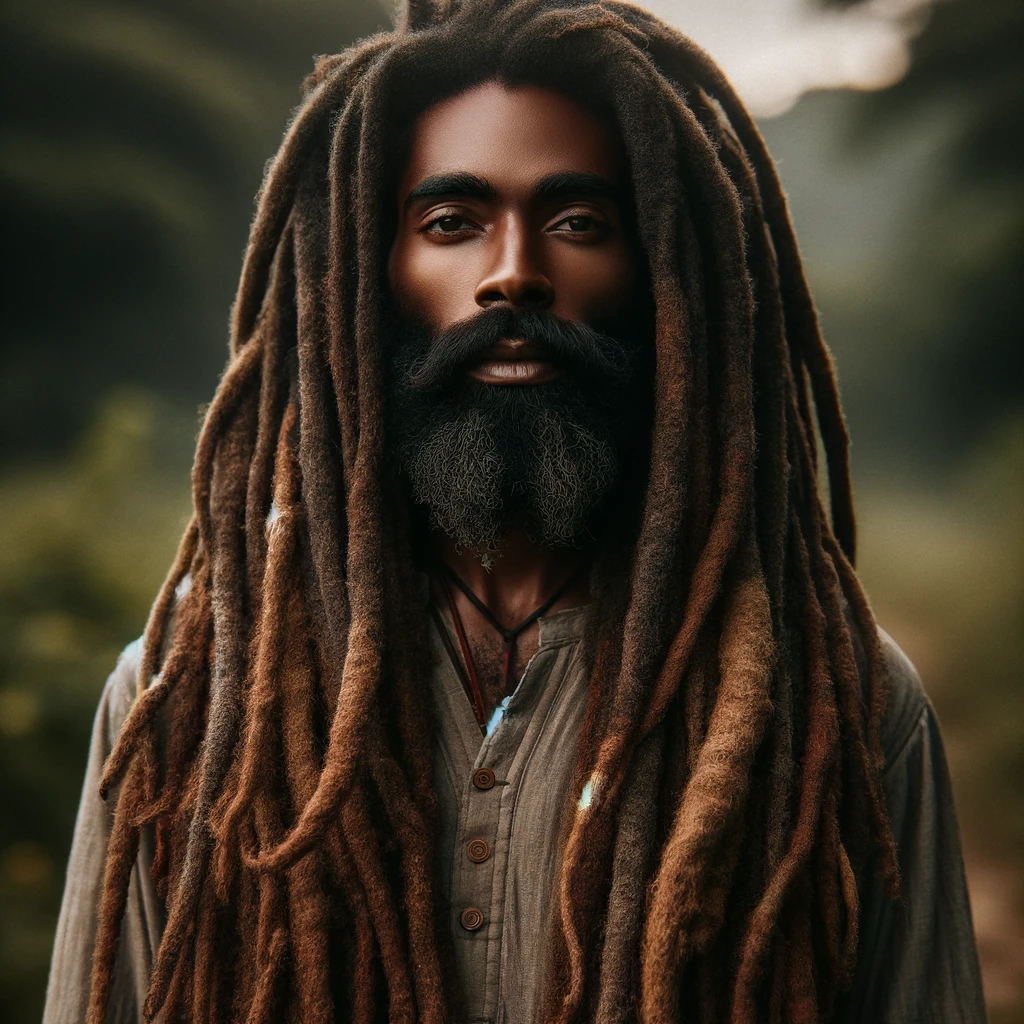Dreadlocks are one of the most recognizable symbols of the Rastafari movement. But beyond their striking appearance, locks carry deep spiritual and cultural significance, symbolizing a commitment to natural living and the Rasta faith.
1. A Biblical Foundation
The tradition of wearing dreadlocks has biblical roots, specifically linked to the Nazarite vow described in the Book of Numbers, where individuals pledged themselves to God and let their hair grow as a symbol of their dedication and separation from secular society. For Rastas, dreadlocks are a visible sign of their vow to live a life dedicated to Jah (God), embracing a natural and righteous path.
2. The Lion’s Mane: Symbol of Strength and Freedom
Dreadlocks are often likened to the mane of a lion, which is a powerful symbol in Rastafari culture. The lion represents Haile Selassie I of Ethiopia, revered as a messianic figure in Rastafari. The imagery of the lion, especially its mane, signifies the strength, pride, and liberated spirit of the Rasta community.
3. Resistance Against Oppression
Wearing dreadlocks is also an act of resistance against conventional standards of beauty and societal norms. It’s a rejection of materialistic values and a colonial mindset that often devalues African aesthetics. For Rastas, dreadlocks are a declaration of independence from oppressive structures and a step towards psychological and spiritual freedom.
4. A Natural State of Being
Rastafari advocate for living in a way that is in harmony with nature, and this philosophy extends to their hair. The decision to wear dreadlocks reflects a commitment to a natural lifestyle, as locks form naturally when hair is allowed to grow and mat without interference. It’s a physical manifestation of the Rasta belief in the sanctity of the natural world.
Closing Thoughts
Dreadlocks in Rastafari culture are much more than a hairstyle. They are a profound expression of faith, identity, and resistance. Through their locks, Rastas communicate their values and their connection to a larger cultural and spiritual heritage.
In the embrace of these natural crowns, Rastas find strength and a constant reminder of their commitments to themselves, their community, and to Jah.

